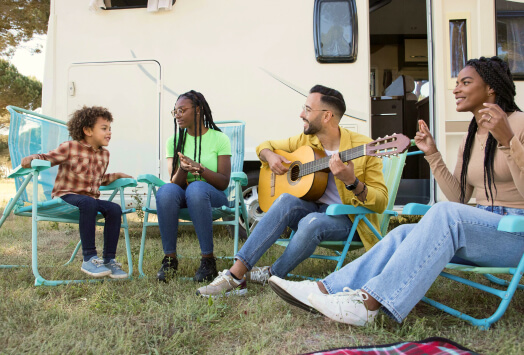Summer is an exciting time for everyone. Warmer weather and longer days create more opportunities for fun and adventure. But, did you know that children actually thrive with structure? It’s easy to have a routine during the school year, but experts actually recommend keeping your routine as intact as possible during the summer too.
Don’t get us wrong, summer fun is still important. Children need to be able to cut loose and enjoy themselves. However, you might notice that when you let the routine fall by the wayside, your fun loving child can become a bit irritable and overtired. How can you maintain some routines to keep your child from devolving into a monster while still keeping the fun alive?
Keep reading for tips on developing a summer schedule for kids as well as an editable schedule template you can use!
- Summer schedule for kids
- ~Why are schedules important for kids?
- How to create a summer schedule
- ~What should be included in a summer schedule?
- Summer schedule examples
- Summer schedule template
Summer schedule for kids
You might think that your child wants a break from their routine when summer hits, but in actuality, structure is beneficial. Not only should you keep their morning routine and bedtime routine standard, but also you should also establish a summer schedule that includes regular meal and snack times, nap or quiet time, educational activities, time outside, and activities that burn off energy.
Why are schedules important for kids?
Schedules are helpful for children every day, but especially during times of change, like summer or winter break, the back to school transition, and family travels.
Research shows that “children feel more confident and secure when their daily activities are predictable and familiar.” It helps younger children develop stronger relationships with their caretakers and gain a sense of belonging and autonomy. Plus, children who grow up in environments that maintain schedules can become more independent and adjust to change more easily.
So even when summer comes, it is still important to stick to your routines and develop a summer schedule for your family.

How to create a summer schedule
Now that you know the importance of maintaining routines and establishing a schedule, you can start to think about creating the best summer schedule for your family. Depending on your child’s age, we recommend sitting down with your little one to build the schedule together. That way, your child feels connected to the plan and more likely to go along with it!
What should be included in a summer schedule?
A great summer schedule includes:
- Set meal and snack times
- Nap(s) or quiet time
- Outdoor time
- Activities that help them burn off their energy
- Educational, but fun, activities.
Spending time outside is so important to children and comes with a wide range of benefits, so try to get outdoors at least once a day. Avoid the midday heat by putting outdoor time at the very beginning or towards the end of the day.
Summer is also a great time to explore museums, indoor (and outdoor!) playgrounds, the beach, local pools, and other new places that might be a little further from home. You can also find lots of wonderful classes and camps for children on Sawyer! Whether you are looking for activities that you can do with your child or drop-off activities and camps, Sawyer has plenty of options.
Summer schedule examples
When you (and your child) build your summer schedule, try to mix up the type of activities that fall under each umbrella so that you can keep each day interesting. You might want to come up with themes for the day or week to help you come up with ideas for activities.
Below we’ve outlined an example schedule with activity suggestions for each section. The times are adjustable based on what schedules and routines you already have in place with your children. Experts recommend keeping wakeup and bedtime roughly the same even when school is out.
Summer schedule example at home
- 7am-7:30am: Wake up + morning routine
- 7:30am-8am: Breakfast
- 8am-10:30am: Outdoor time (Activity examples below)
- ~Chalk art
- ~Water play (see our blog post with some of our favorite water activities for kids)
- ~Nature exploration and crafts (check out some of our favorite nature crafts for kids in our blog post)
- ~Practice a sport (kick a soccer ball around, have a catch, shoot hoops)
- ~Get dirty in the garden (see our blog post on gardening with kids for tips and tricks!)
- ~Go swimming (check out our blog post on swimming lessons and water safety for kids)
- ~Get messy with outdoor crafts
- ~Have fun with bubbles
- ~Run a lemonade stand
- ~Take a walk
- ~Have a scavenger hunt
- 10:30am-11am: Snack and water
- 11am-12pm: Educational but fun activities (Examples below)
- ~Read books
- ~Practice letters and numbers
- ~Choose a topic and learn about it (example: animals, dinosaurs, space, the ocean, science, etc)
- ~Do arts & crafts
- ~Listen to music and play along with household items
- ~12pm-12:30pm: Lunch and water
- 12:30pm-3pm: Nap, quiet time, and/or independent play
- ~If your child is too old to nap, encourage them to spend quiet time in their room reading, playing dress up and pretend play, coloring independently, etc
- 3pm-3:30pm: Snack
- 3:30pm-4:30pm: Educational but fun activities (Use above examples)
- 4:30pm-5:30pm: Outdoor time (Use above examples)
- 5:30pm-6pm: Make dinner together
- 6pm-6:30pm: Dinner
- 6:30pm-7:30pm: Bath and bedtime routine
If you plan to go on an adventure, like to a museum or the beach, or if you sign up for a class or camp, try to choose a time that fits into the schedule and keeps your meal and nap/quiet time sacred. If you can avoid a hangry and overtired child, you will all have a better time.

Summer schedule example with an outing
- 7am-7:30am: Wake up + morning routine
- 7:30am-8am: Breakfast
- 8am-10:30am: Outdoor time
- 10:30am-11am: Snack and water
- 11am-12pm: Educational but fun activities (Examples below)
- 12pm-12:30pm: Lunch and water
- 12:30pm-1:30pm: Travel and nap/quiet time
- 1:30-4:30pm: Outing and snack
- ~Beach
- ~Pool
- ~Indoor/outdoor playground
- ~Museum
- ~Farmer’s market
- ~Art class, music class, dance class, or other activity
- ~Sports
- 4:30pm-5:30pm: Travel and nap/quiet time
- 5:30pm-6pm: Make dinner together
- 6pm-6:30pm: Dinner
- 6:30pm-7:30pm: Bath and bedtime routine
Summer schedule template
Ready to make your own summer schedule and rock the rest of this summer? Use our template to get started and fill it out with your family.
Get your free editable schedule template
With the above tips, examples, and our template, we hope you can set up some structure and keep the fun flowing this summer! If you are looking for activities and camps in your area, Sawyer has wonderful educators with tons of options. Happy summer, everyone!
















